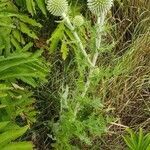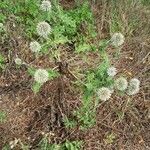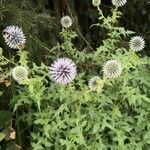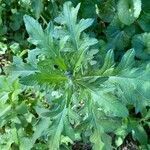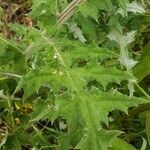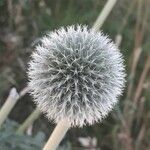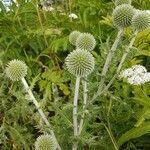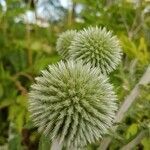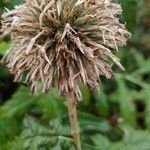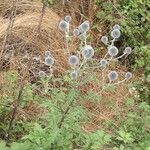Plants 100–200 cm. Stems simple to much branched, ± glandular, ± tomentose. Leaves: basal and proximal cauline leaves shortly winged-petiolate, distal cauline sessile, clasping; blades oblong-elliptic to narrowly obovate, margins ± subentire or 1–2-pinnately lobed, lobes lanceolate to triangular, margins revolute, spiny-dentate, spine-tipped, spines slender, 2–4 mm; abaxial faces densely gray-or white-tomentose, adaxial faces green, glandular-scabrous. Secondary heads 3–6 cm diam. Involucres 15–25 mm. Outer phyllaries ± glandular, inner phyllary apices attenuate, expanded, fringed. Corollas white to pale blue, 12–14 mm, tube ca. 5.5 mm, lobes ca. 7 mm. Cypselae 7–10 mm; pappi of ± connate, ciliate scales 1–1.5 mm. 2n = 30, 32.
Coarse, branching, to 2.5 m; stem spreading-hairy (some of the hairs gland-tipped), also tomentose above; lvs white-tomentose beneath, green and merely scabrous or hirsute above (many of the hairs gland-tipped), sessile and clasping (at least the middle and upper), not decurrent, pinnatifid, to 3.5 × 2 dm; secondary heads naked-pedunculate, 3.5–6 cm thick, pale bluish; proper invol 1.5–2 cm, its bracts puberulent on the back; subtending bristles seldom half as long as the invol; 2n=30, 32. Waste places; native of Eurasia, sometimes cult., and casually established as a weed here and there in e. U.S. and adj. Can. July–Sept.
A herb.
